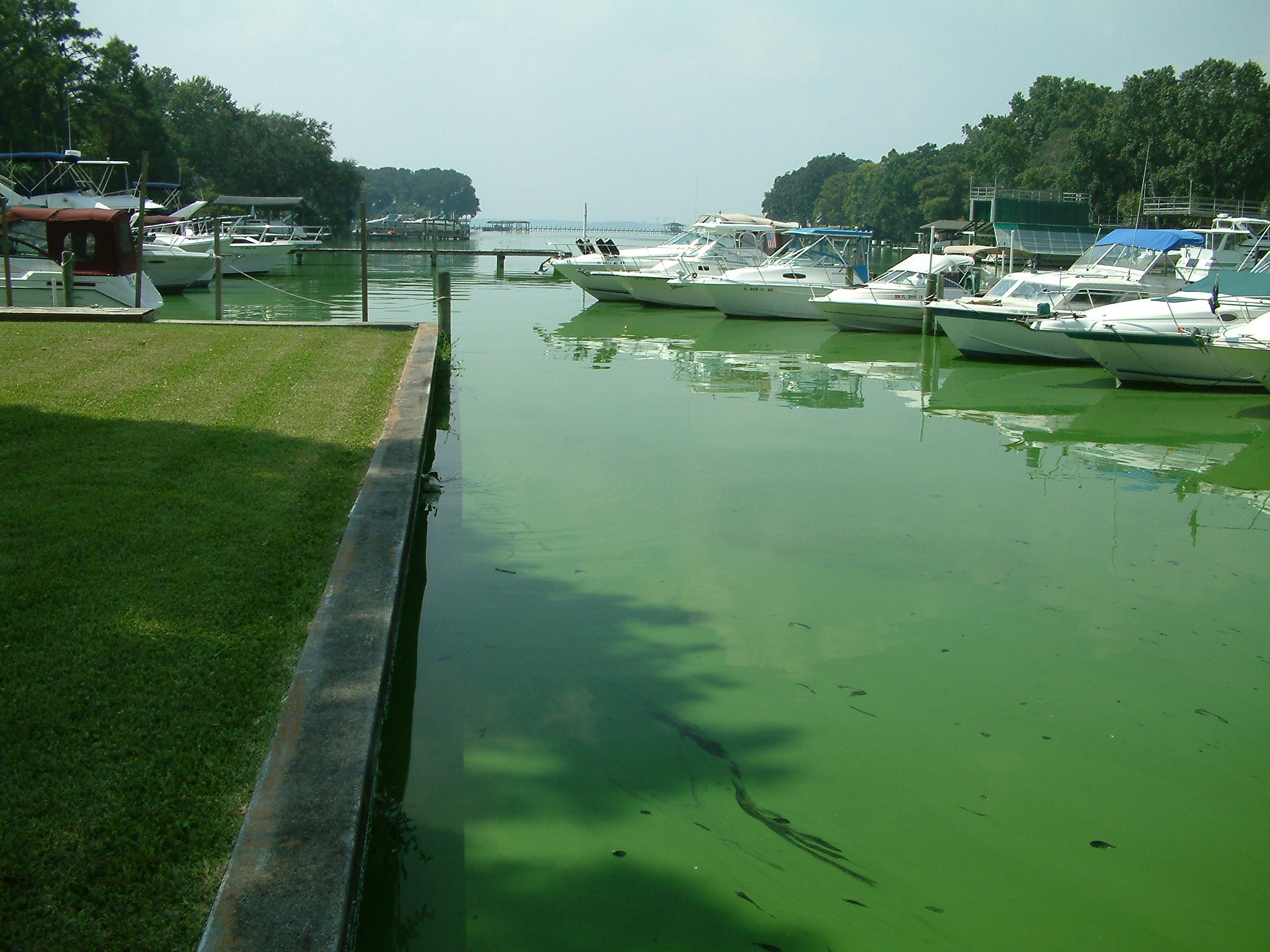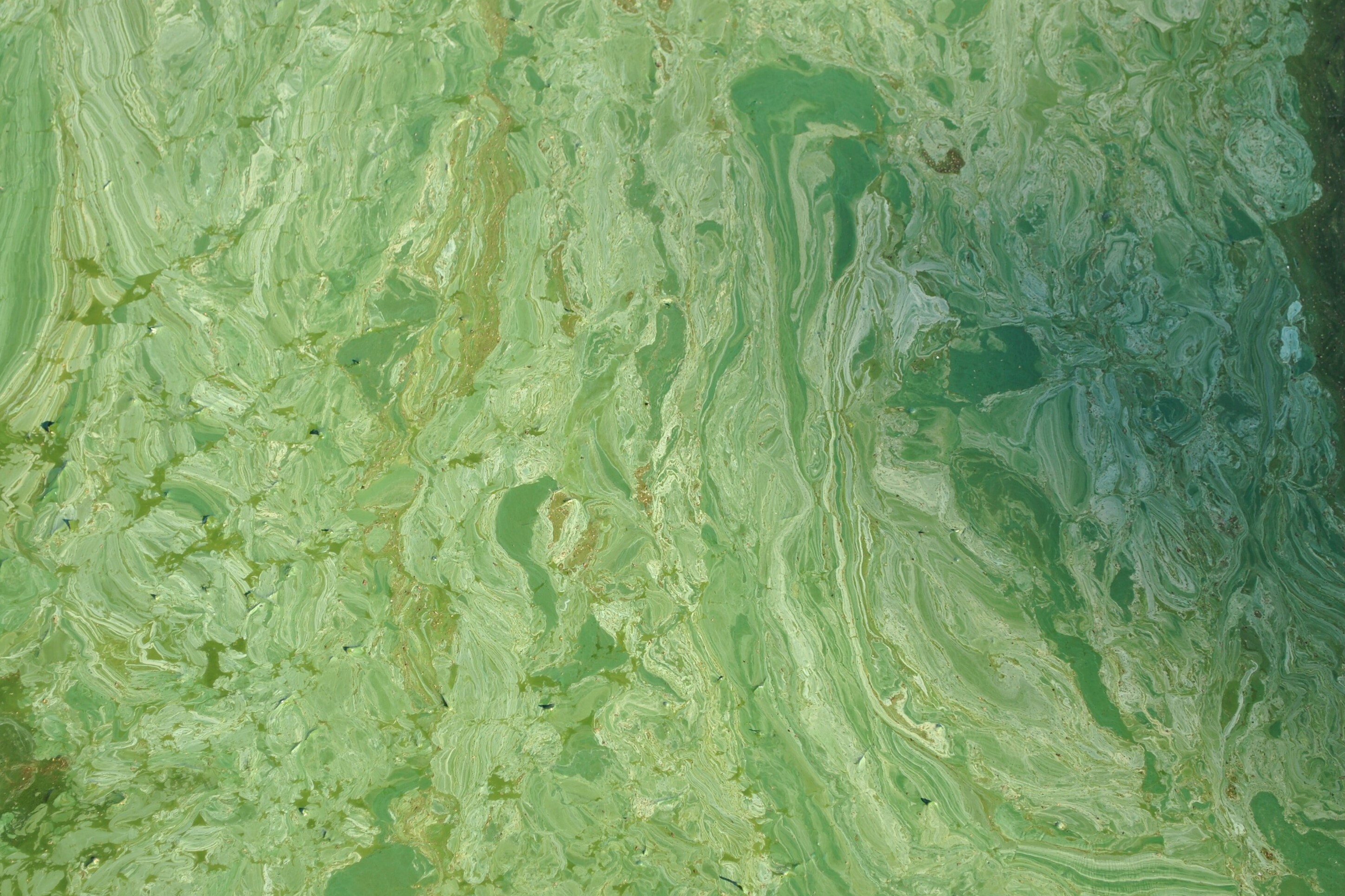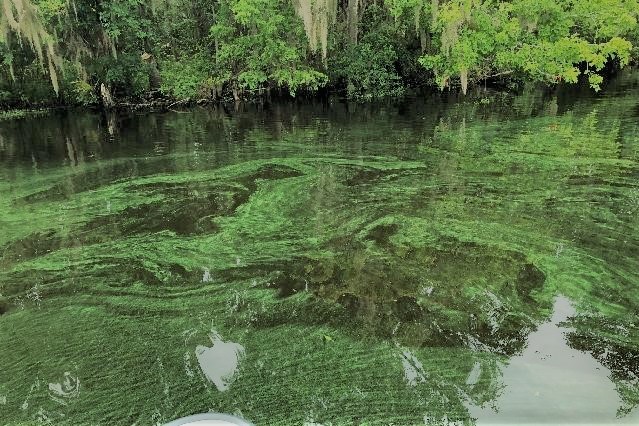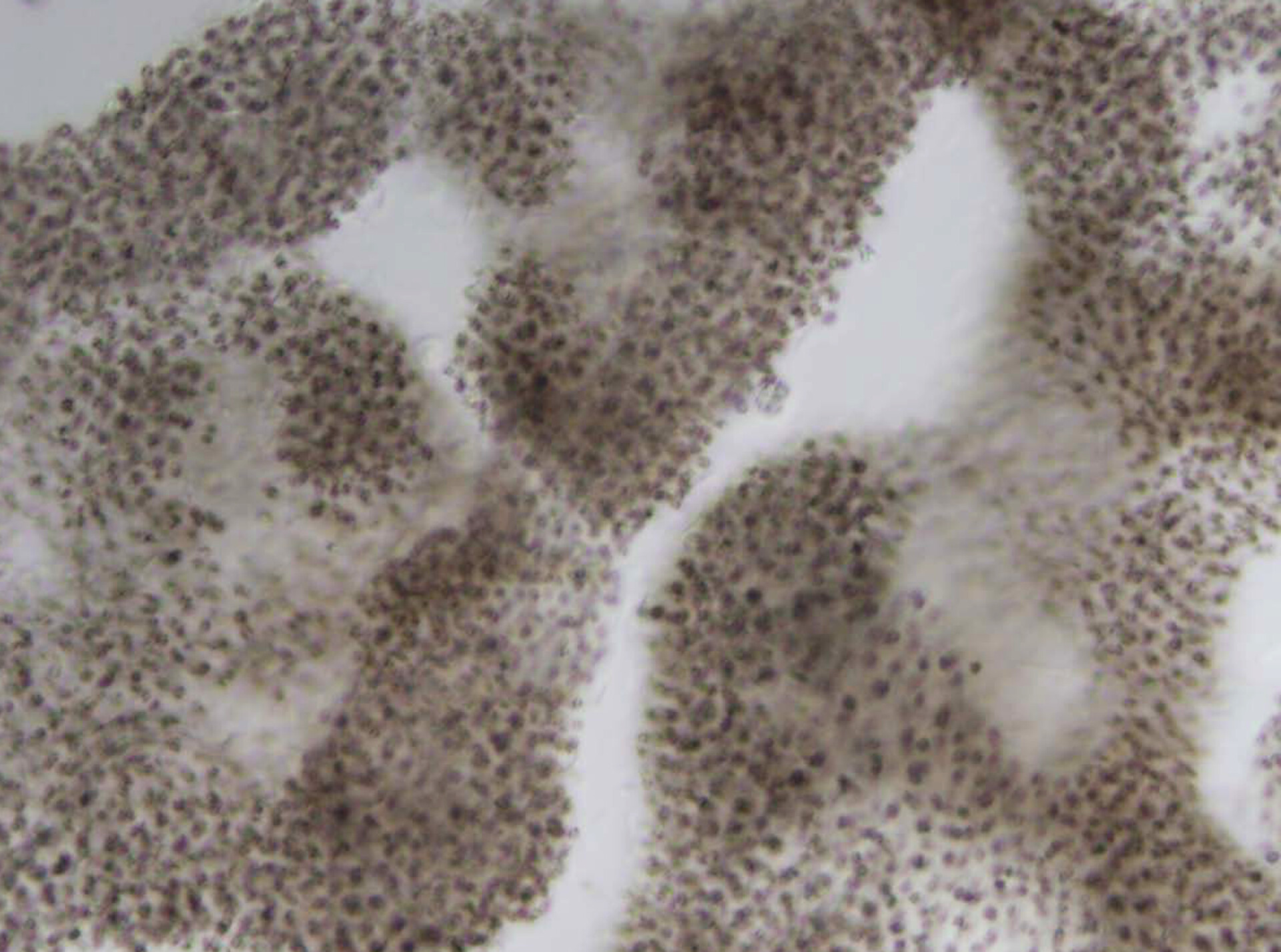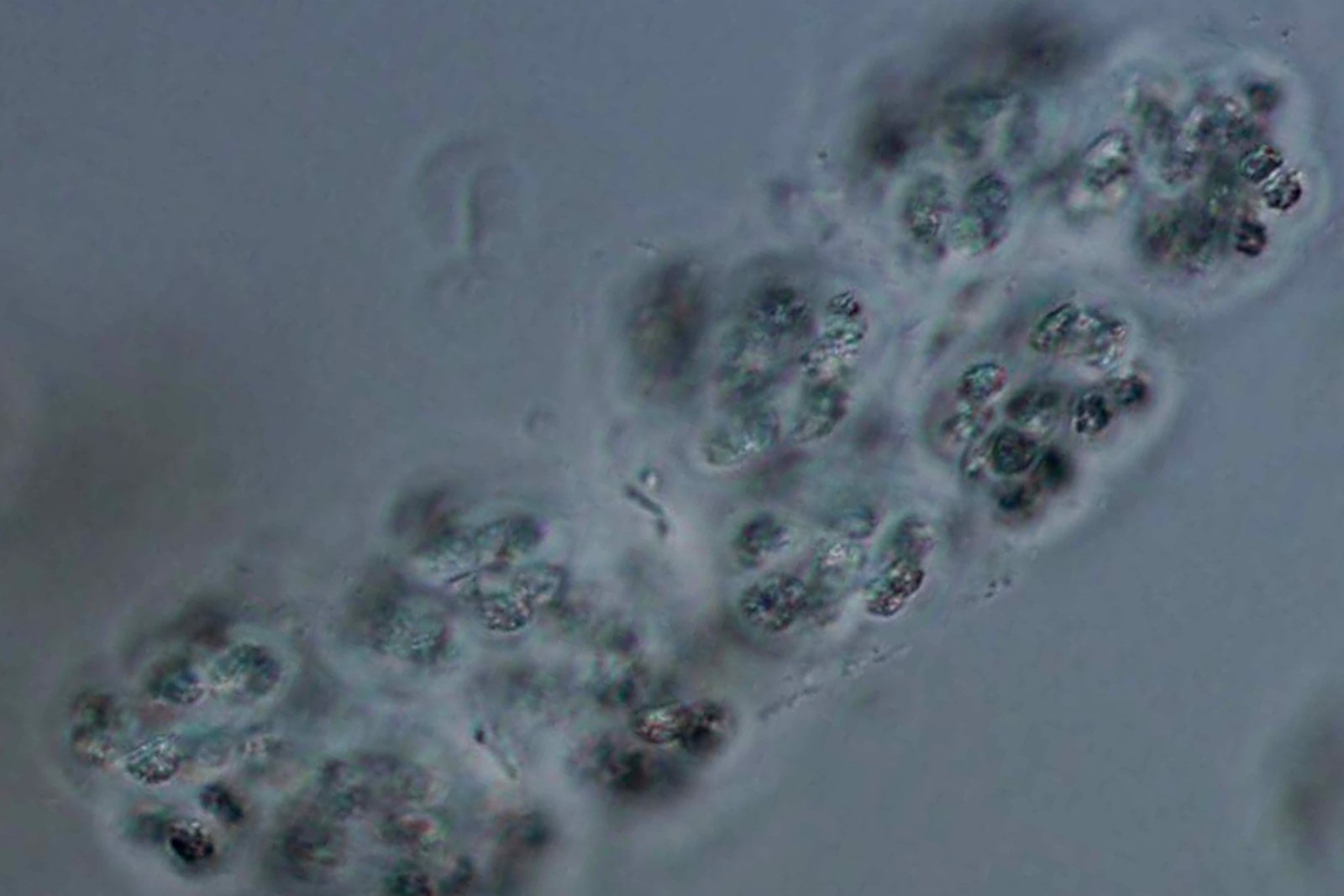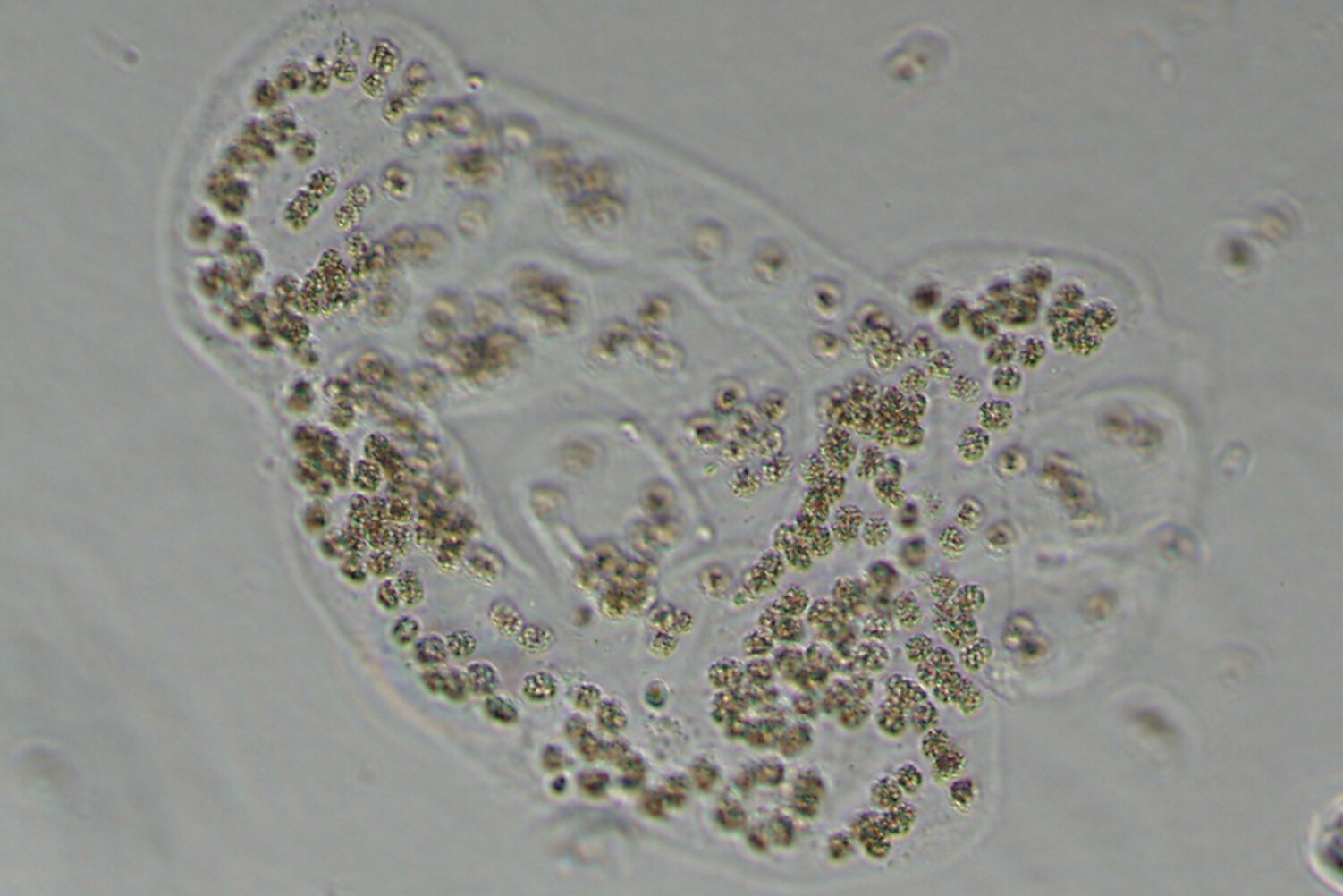Blue-Green Algae
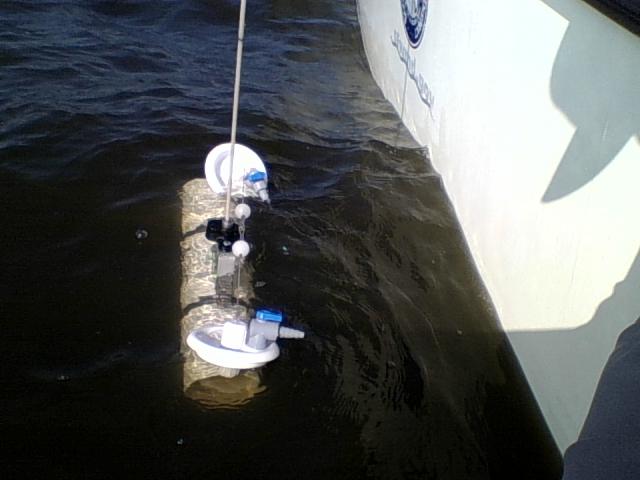 Blue-green algae, or cyanobacteria, occur frequently in Florida’s freshwater environments. Blue-green algae are microorganisms that function like plants in that they use light energy from the sun and nutrients acquired from the environment to help them grow.
Blue-green algae, or cyanobacteria, occur frequently in Florida’s freshwater environments. Blue-green algae are microorganisms that function like plants in that they use light energy from the sun and nutrients acquired from the environment to help them grow.
Blooms occur when rapid growth of algae leads to an accumulation of individual cells that, in turn, discolor water, often produce floating mats that produce unpleasant odors, and may negatively impact fish and other aquatic animals.
Some environmental factors that contribute to blue-green algae blooms are sunny days, warm water temperatures, still water conditions and a plentiful supply of nutrients. Reducing the supply of nutrients, nitrogen and phosphorus in particular, can help decrease the intensity and duration of blue-green algal blooms.
DEP, water management districts, and FWC coordinate to collect samples when algal blooms are observed during their routine water quality monitoring and when blooms are reported through either the ReportAlgalBloom.com or through the hotline at 1-855-305-3903.
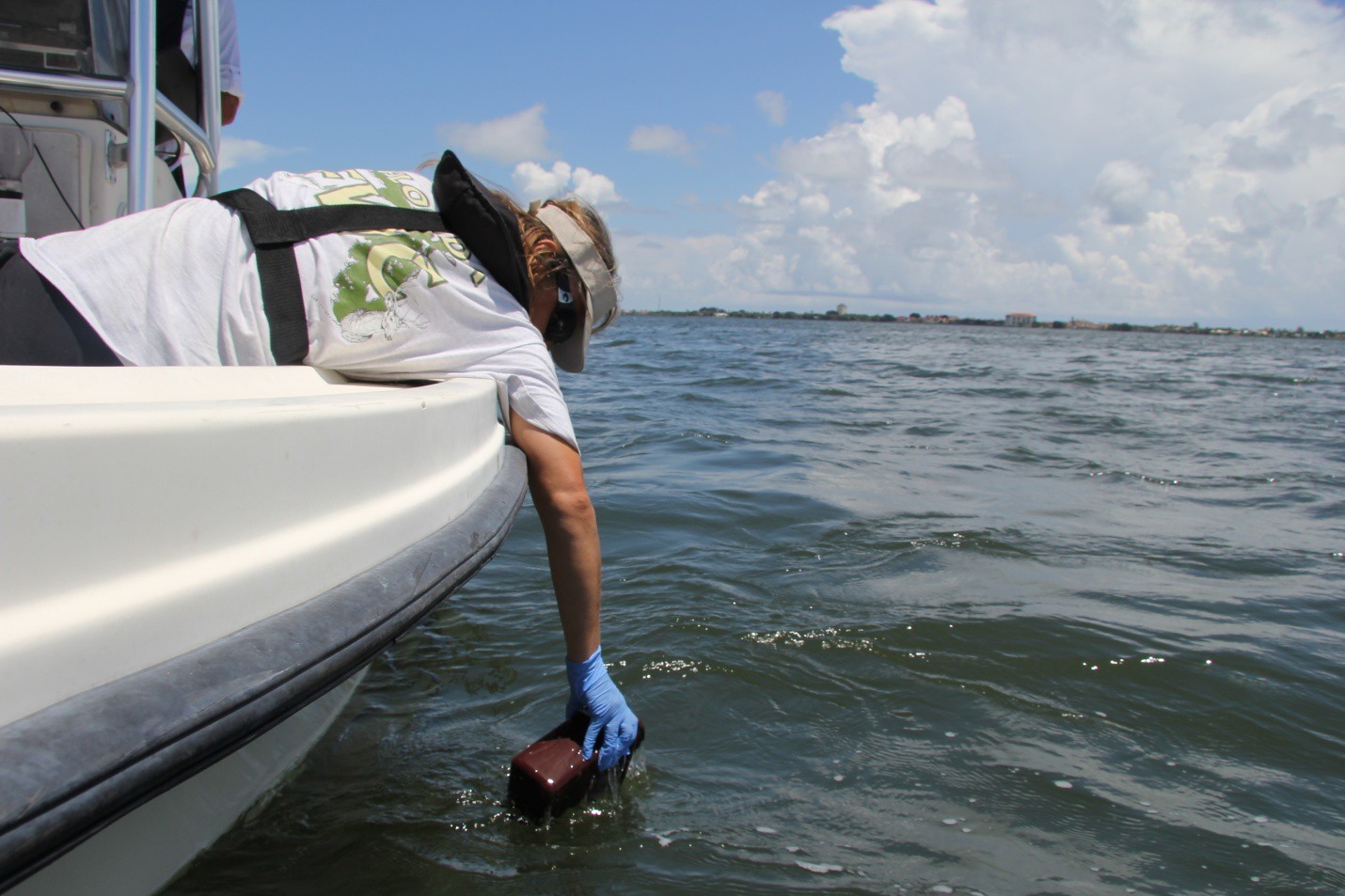 Many blue-green algae can produce toxins and algal blooms can result in high toxin concentrations. Exposure to blue-green algae blooms can cause health effects in both people and animals, and most problems occur when water containing high amounts algal toxins are ingested. Direct contact or breathing airborne droplets containing high levels of algal toxins during swimming or showering can cause irritation of the skin, eyes, nose and throat.
Many blue-green algae can produce toxins and algal blooms can result in high toxin concentrations. Exposure to blue-green algae blooms can cause health effects in both people and animals, and most problems occur when water containing high amounts algal toxins are ingested. Direct contact or breathing airborne droplets containing high levels of algal toxins during swimming or showering can cause irritation of the skin, eyes, nose and throat.
Unfortunately, there are no visual signs that might indicate when blue-green algae are producing toxins, so people and animals should not drink or swim in water where blue-green algae blooms are present.
Sensitive individuals (e.g., children, the elderly and those who are immunocompromised) may still be at risk even at low concentrations and should avoid any exposure.

Understanding Blue-Green Algae
View this infographic to learn more about blue-green algae, a type of bacteria that occur frequently in Florida’s freshwater environments. Learn what causes a bloom, potential health effects and where you can report a bloom.


Blue-Green Algae Journey Map
View this Journey Map to learn about DEP's and DOH's roles and responsibilities when responding to cyanobacteria blooms and to understand the current best practices being followed to communicate and coordinate cyanobacteria bloom response with the local county health departments.
Frequently Asked Questions
-
What is blue-green algae?
Blue-green algae, or cyanobacteria, occur frequently in Florida’s freshwater environments. Blue-green algae are microorganisms that function like plants in that they use light energy from the sun and nutrients acquired from the environment to help them grow.
-
What causes a bloom?
Blooms occur when rapid growth of algae leads to an accumulation of individual cells that, in turn, discolor water, often produce floating mats that produce unpleasant odors, and may negatively impact fish and other aquatic animals.
Some environmental factors that contribute to blue-green algae blooms are sunny days, warm water temperatures, still water conditions and a plentiful supply of nutrients.
Reducing the supply of nutrients, nitrogen and phosphorus in particular, can help decrease the intensity and duration of blue-green algal blooms.
-
How does blue-green algae differ from red tide?
Blue-green algae blooms tend to form or develop in freshwater systems, whereas red tide often develops 10-40 miles offshore. While red tide may move into bays and estuaries, the algae that cause red tide cannot survive in freshwater waterbodies.
-
Where can I find out about blue-green algae in my area?
Whether algal bloom conditions are observed during routine sampling or in response to a citizen generated report, sampling teams enter the site visit information (location, bloom conditions observed and note whether toxins were detected) in real-time. This information is currently displayed on the statewide water quality map.
-
Is blue-green algae toxic?
You cannot tell if blue-green algae are producing toxins just by looking at a bloom.
Don’t drink or swim in water where blue-green algae blooms are present; sensitive individuals (e.g., children, the elderly, and those who are immunocompromised) may still be at risk even at low concentrations and should avoid any exposure.
DEP tests algal samples to determine the type of algae present. If the algae are capable of producing toxins, the sample is subject to additional testing to determine if toxins are present in the water or not.
Recurring and persistent blooms are routinely monitored to assess whether a bloom is producing toxins.
-
Is blue-green algae dangerous?
The Florida Department of Health (DOH) takes the lead in determining if an algal bloom presents a risk to human health. When appropriate, DOH issues health alerts and may also post signs when blooms could affect people using beaches or other areas where there is a potential for exposure.
Many blue-green algae can produce toxins and algal blooms can result in high toxin concentrations. Exposure to blue-green algae blooms can cause health effects in people and animals. Most problems occur when water containing high amounts of algal toxins are ingested.
Direct contact or breathing airborne droplets containing high levels of algal toxins during swimming or showering can cause irritation of the skin, eyes, nose and throat.
-
Where can I report an algal bloom?
The state’s algal bloom response team encourages everyone to be on the lookout for algal blooms and report them. Blooms can be reported to DEP 24 hours a day, seven days a week online at ReportAlgalBloom.com or toll-free at 1-855-305-3903.
Additional Resources
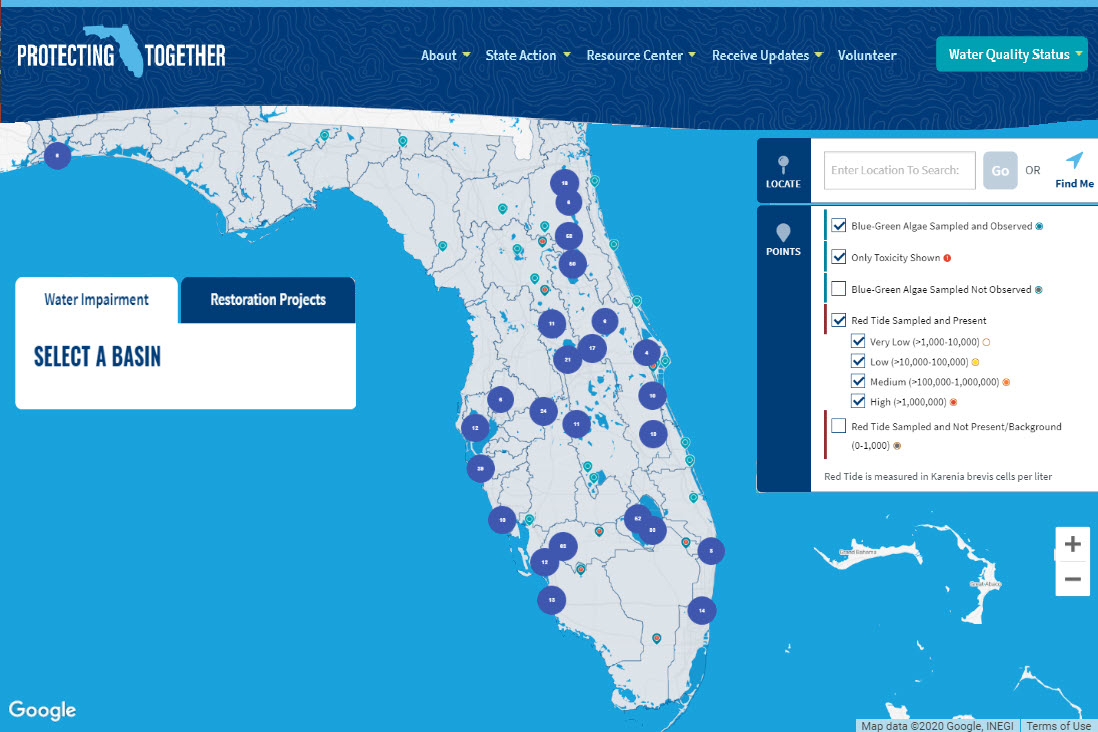
Water Quality Status Dashboard
The Protecting Florida Together Water Quality Dashboard delivers relevant water quality information statewide including blue-green algae, red tide and nutrient monitoring data. This map helps to ensure transparency and accountability with respect to our water quality data and its exchange with the public. Information for this map provided by DEP and FWC.
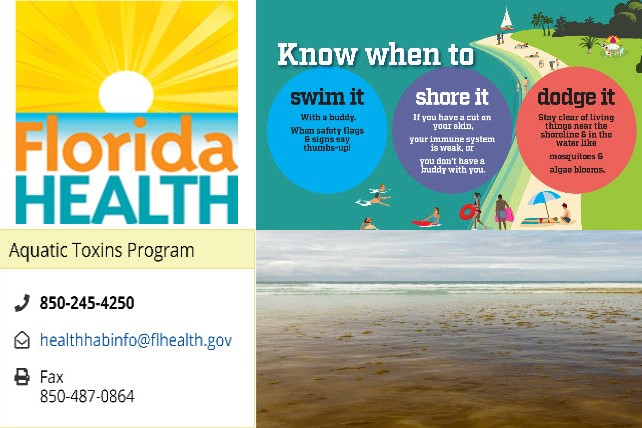
AQUATIC TOXINS PROGRAM
Staff at the Florida Department of Health’s Aquatic Toxins Program work every day to keep Floridians and visitors to our state safe. DOH works in coordination with many partners, including DEP and FWC, to ensure public health is protected.
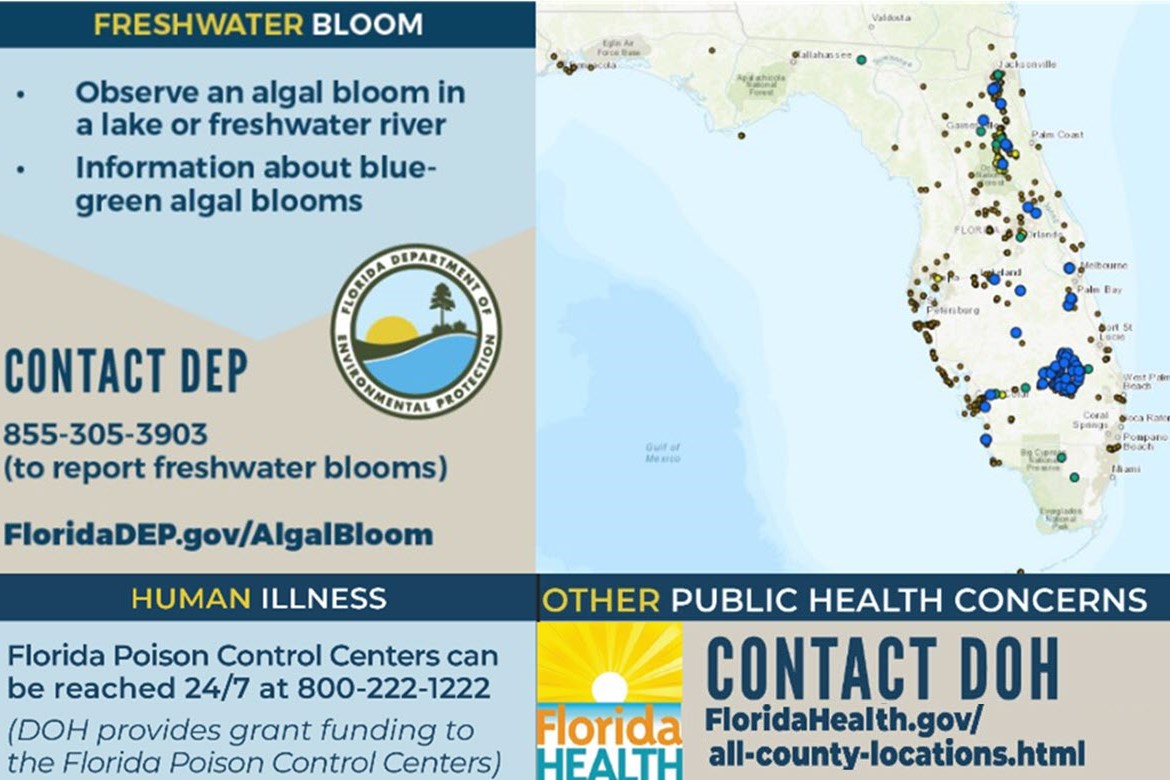
Algal Bloom Dashboard
The Algal Bloom Dashboard provides an interactive map that features a variety of detailed information and real-time sampling updates for harmful algal blooms in Florida. This complementary online resource provides data over a more protracted period of time, including data older than 90 days, and includes additional information collected at the time of sampling, such as photographs of blooms, as well as information generated in the laboratory, such as documentation of dominant species.
